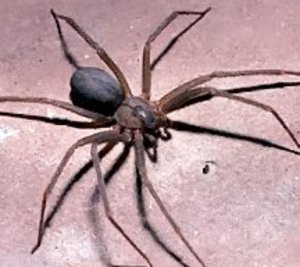In most situations, you do not need to worry about being bitten by a spider. Most spider bites will simply cause you to experience some itching at the location of the bite, but that is about as far as the symptoms will go. However, there are four very poisonous types of spiders which you should watch out for if you live in the United States. Here, we will take a closer look at some of these types of spiders, as well as what you can do to avoid getting bitten by them.
What Are The Four Types of Poisonous Spiders That Are Found in the U.S.?
The Black Widow Spider is one of the most well known poisonous spiders. The venom of these spiders is known to be stronger than many types of poisonous snakes. The typical side effects which are associated with Black Widow Spider bites from this type of spider include pain, muscle cramping, fevers, dizziness, shock, coma, kidney failure, and in some rare cases, death. While these spiders have been the culprits of death among some humans, it is pretty uncommon. In appearance, Black Widows are characterized by a fairly large, black and hairy body which has red markings on it. These markings are a lot more noticeable on females than on males. The Black Widow Spider has been found mainly in the Eastern part of the United States, although it has been found in the Midwest and West as well.
The Brown Recluse Spider is one of the poisonous spiders which can be found in the United States. Although there is constantly a lot of hype about this spider being poisonous, the truth in the matter is that Brown Recluse Spider bites are a rarity. Deaths caused by these spiders are also rare, although they have occurred – mainly among children. Some of the main side effects which are associated with Brown Recluse Spider bites include nausea and vomiting, fever, gangrene effects on the bite, and more. They are not known to be the type to attack, so the only time that they typically bite is when there is accidental or intentional human contact. This type of spider is characterized by its brown or dark yellow body and long legs. The Brown Recluse Spider is known to be found throughout most of the United States, although it is the most common among the Midwestern and Southeastern states.
The Hobo Spider is one of the types of poisonous spiders whose bites have not been known to cause any deaths. They have, however, been found to cause necrosis. These spiders are characterized with having long, smooth legs and being different shades of brown in color. They are often confused with other types of spiders, as there are many other types which look a lot like them. The Hobo Spider is typically only found in the Northwestern part of the United States, though there have been reported sightings in other states as well.
The Yellow Sac Spider is another one of the types of poisonous spiders which have not been known to cause any deaths. At the same time, they are also known to be the spiders which produce the most common spider bites. Although its venom has been found to be very poisonous, the Yellow Sac Spider is not known to cause very harmful side effects. The Yellow Sac Spider is characterized by its yellow body, which is relatively small, and its long legs. This spider can commonly be found in the homes of many of the U.S. states.
How Can You Protect Yourself From Getting Bit By These Spiders?
There are a number of different things that you can do to prevent yourself from getting bitten by all of the poisonous spiders which were previously mentioned. The most important thing is for you to make sure that you do not touch one of these spiders. In most cases, the main reason that people get bitten by spiders is because they do not see them. Many of them enjoy hiding in dark, damp areas. It is important to make sure that you are cautious when picking up clothes, sheets, or even towels that have been laying around that no one has touched for awhile. It is also a good idea to examine shoes before you put them on, to make sure that there is not a spider occupying them. Since spiders tend to lurk in corners most often, it is a good idea to make sure that you examine corners before putting your hand near them. You should never directly use your hand to touch a poisonous spider. If you feel the need to kill one, you should always use a shoe, fly swatter or spider killing spray.



